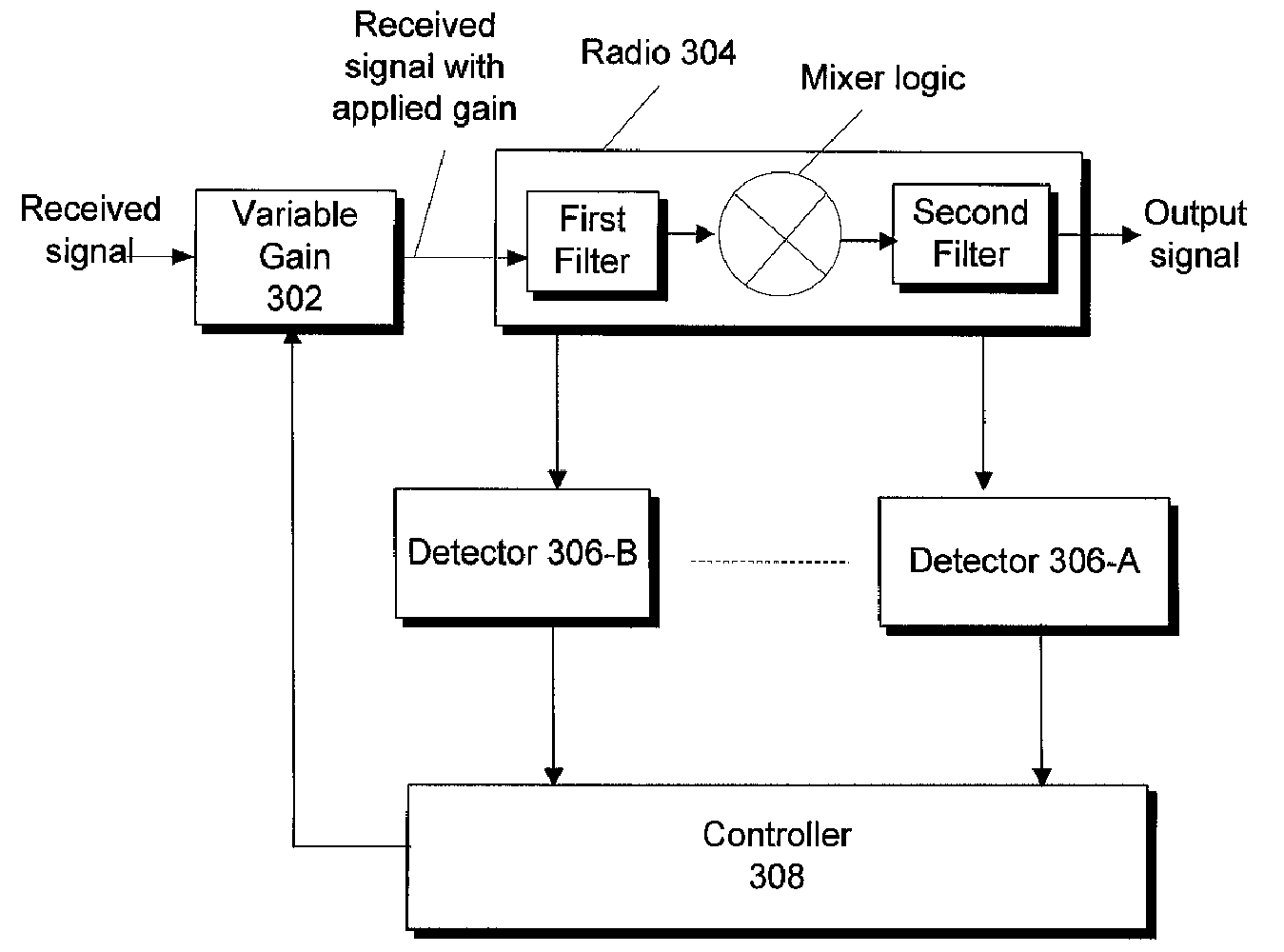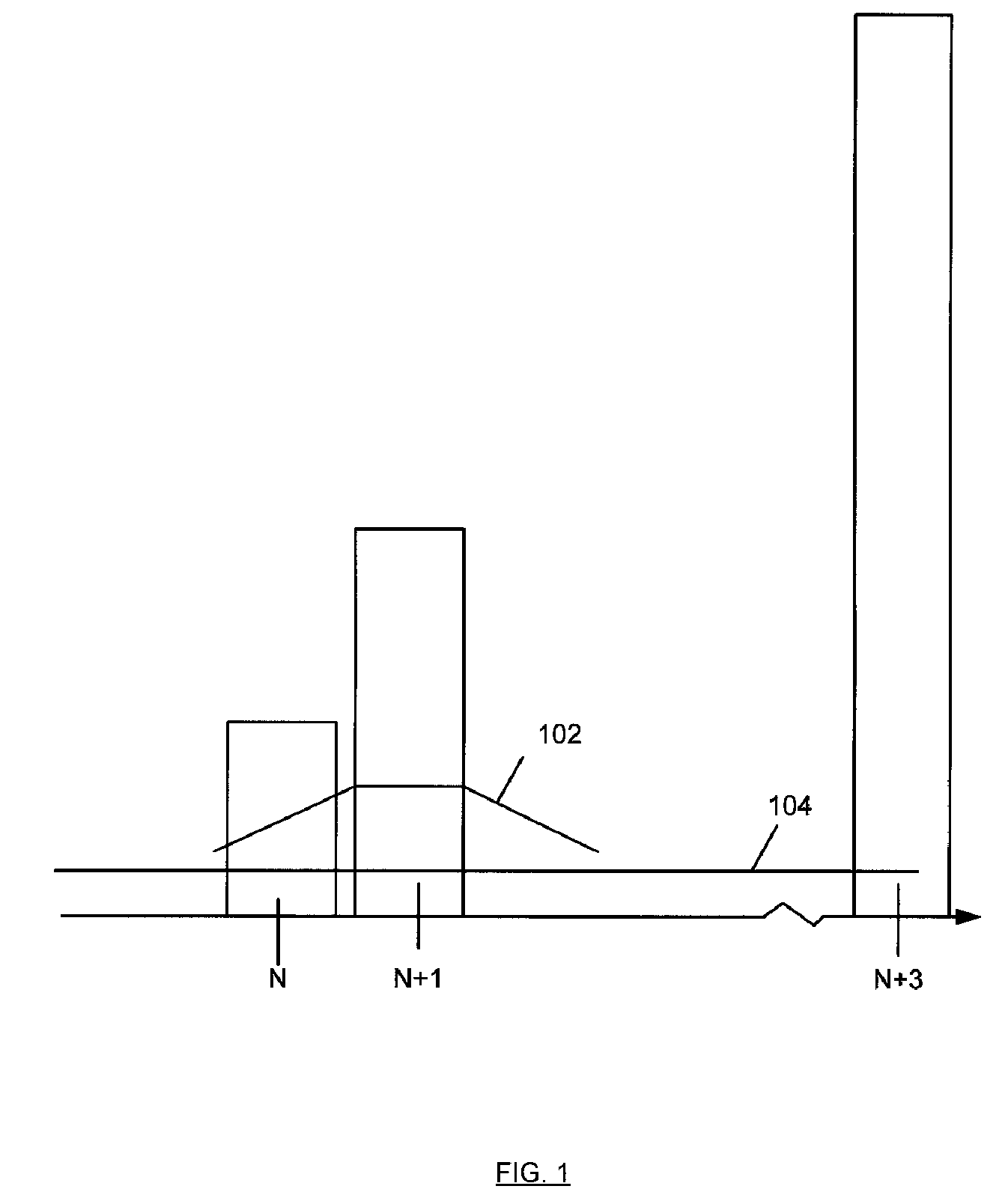Techniques to deterministically reduce signal interference
a technology of signal interference and deterministically reducing techniques, applied in the direction of electrical equipment, radio transmission, transmission, etc., can solve the problem that the receiver is unable to accurately reproduce the transmitted data signal
- Summary
- Abstract
- Description
- Claims
- Application Information
AI Technical Summary
Benefits of technology
Problems solved by technology
Method used
Image
Examples
Embodiment Construction
[0011]Reference throughout this specification to “one embodiment” or “an embodiment” means that a particular feature, structure, or characteristic described in connection with the embodiment is included in at least one embodiment of the present invention. Thus, the appearances of the phrase “in one embodiment” or “an embodiment” in various places throughout this specification are not necessarily all referring to the same embodiment. Furthermore, the particular features, structures, or characteristics may be combined in one or more embodiments.
[0012]FIG. 1 depicts an example of interference arising from interfering signals. A signal at frequency N may be a desired digital signal. For example, the desired signal may carry video or other information and may be transmitted wirelessly. Signals from adjacent frequencies of N+1 and N+3 are shown. For example, N+1 may be 6 MHz from frequency N whereas N+3 may be 18 MHz from frequency N, however other the value of 1 may represent frequency o...
PUM
 Login to View More
Login to View More Abstract
Description
Claims
Application Information
 Login to View More
Login to View More - R&D
- Intellectual Property
- Life Sciences
- Materials
- Tech Scout
- Unparalleled Data Quality
- Higher Quality Content
- 60% Fewer Hallucinations
Browse by: Latest US Patents, China's latest patents, Technical Efficacy Thesaurus, Application Domain, Technology Topic, Popular Technical Reports.
© 2025 PatSnap. All rights reserved.Legal|Privacy policy|Modern Slavery Act Transparency Statement|Sitemap|About US| Contact US: help@patsnap.com



